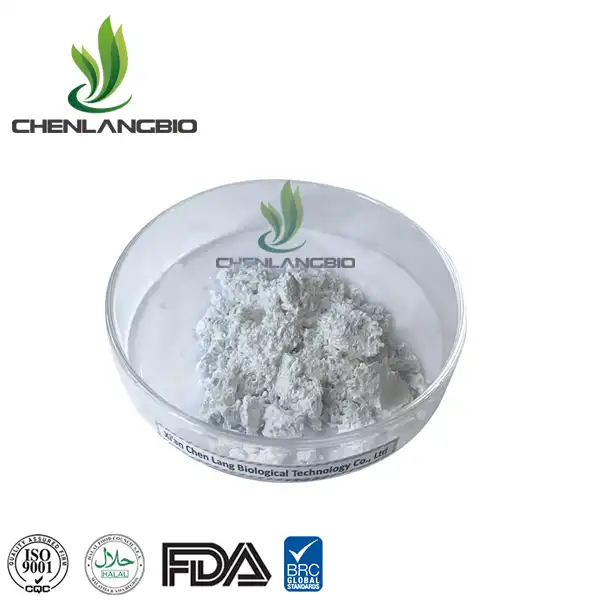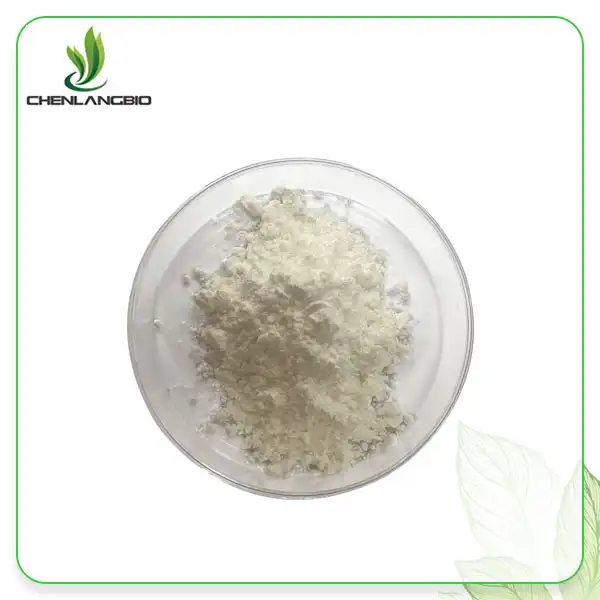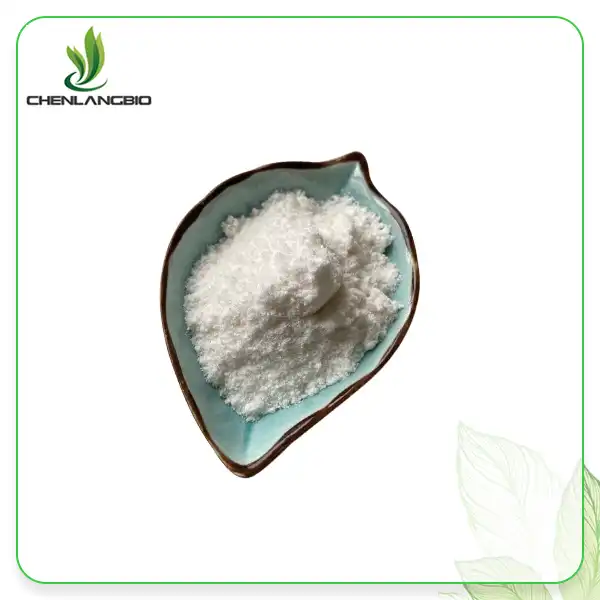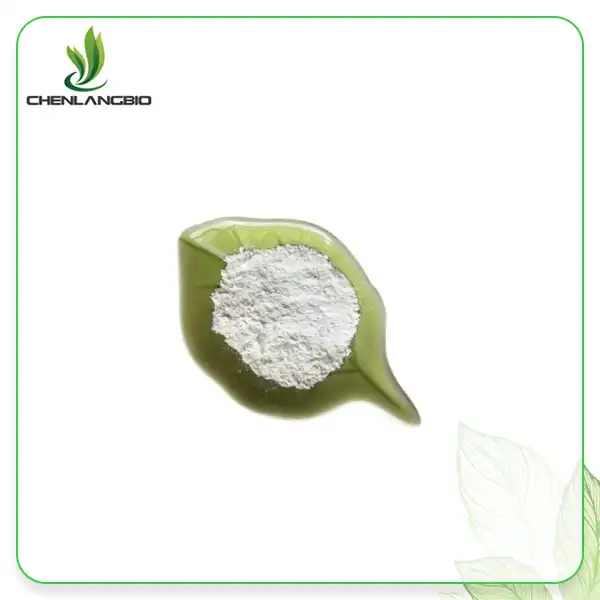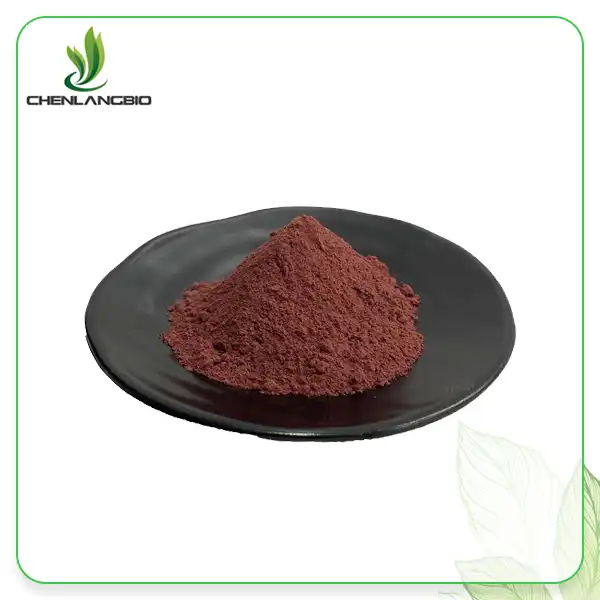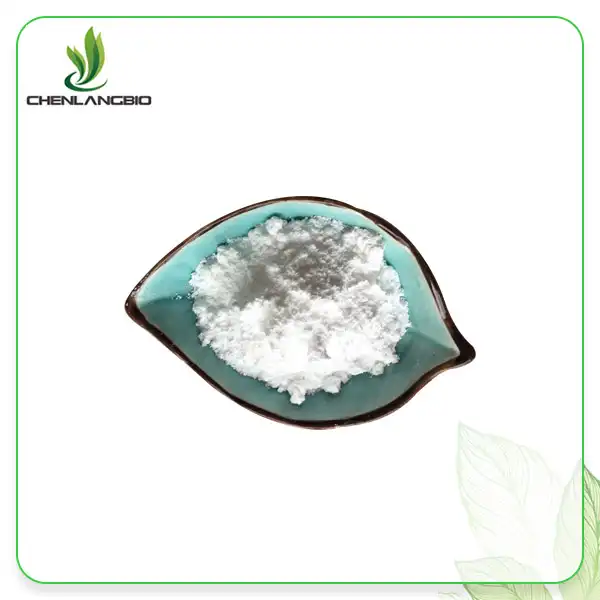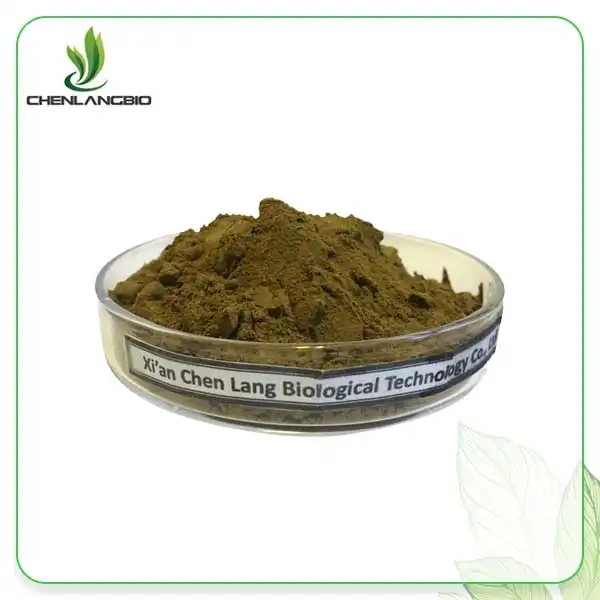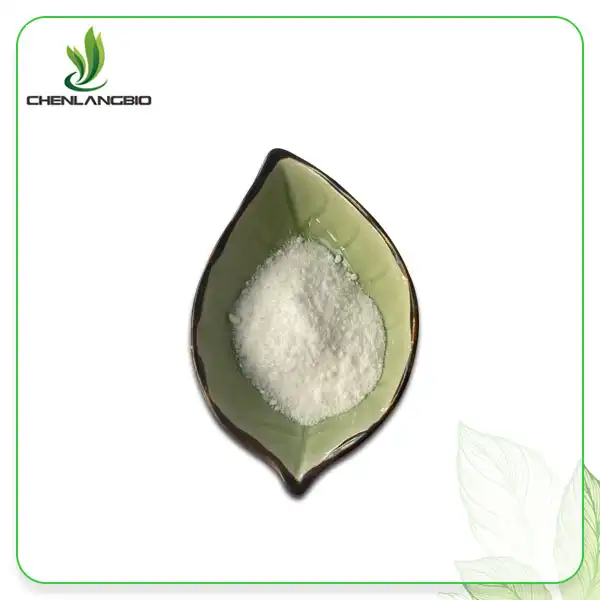Are There Any Considerations Regarding the Purity of D-Luciferin Sodium Salt?
2025-04-22 10:27:48
When working with D-Luciferin Sodium Salt, purity is a critical factor that significantly impacts experimental outcomes and reliability. As a substrate used in bioluminescence applications, the purity of D-Luciferin Sodium Salt directly affects light emission intensity, stability, and experimental reproducibility. High-purity D-Luciferin Sodium Salt (99%+) ensures consistent results in applications ranging from in vivo imaging to ATP detection assays, making it essential for researchers to understand and consider various aspects of purity when selecting and using this vital reagent.
Critical Quality Parameters for D-Luciferin Sodium Salt
Analytical Purity Standards and Testing Methods
The purity of D-Luciferin Sodium Salt is assessed through multiple sophisticated analytical techniques to ensure it meets the highest standards required for sensitive bioluminescence applications. High-performance liquid chromatography coupled with evaporative light scattering detection (HPLC-ELSD) represents one of the primary methods used to determine the content purity of D-Luciferin Sodium Salt. This technique effectively separates the active compound from potential impurities and provides a quantitative measurement of purity levels. Additional analytical methods include ultraviolet-visible spectrophotometry, which measures the characteristic absorption spectrum of D-Luciferin Sodium Salt to confirm identity and purity. The combination of these analytical approaches ensures that the D-Luciferin Sodium Salt meets the required purity specification of 99%+ as verified by the CAS number 103404-75-7. Manufacturers like Xi An Chen Lang Bio Tech Co., Ltd. employ these rigorous testing methods in their quality inspection centers to ensure consistent purity levels across production batches, which is essential for researchers conducting sensitive bioluminescence experiments where even minor impurities could lead to diminished signal intensity or inconsistent results.
Impact of Impurities on Bioluminescence Efficiency
Impurities in D-Luciferin Sodium Salt can significantly compromise bioluminescence efficiency and experimental outcomes. Even minute contaminants can interfere with the reaction between D-Luciferin Sodium Salt and luciferase, potentially quenching light emission or creating background noise that reduces signal-to-noise ratios. This is particularly problematic in applications like Bioluminescence Imaging (BLI), where researchers rely on clean, quantifiable signals to monitor biological processes in living organisms. The mechanism of action for D-Luciferin Sodium Salt involves oxidation under the combined action of ATP and luciferase, resulting in light emission that is proportional to luciferase concentration when substrate concentrations are optimal. Impurities can disrupt this proportional relationship, leading to non-linear responses and inaccurate quantification. In cancer research and tumor monitoring, where precise tracking of tumor growth and metastasis is essential, using high-purity D-Luciferin Sodium Salt becomes critically important. The presence of impurities can lead to false readings that might incorrectly indicate treatment efficacy or failure, potentially misdirecting research efforts or clinical decisions. Therefore, researchers should always verify the purity specifications of D-Luciferin Sodium Salt and select products with documented purity levels of 99%+ to ensure reliable and reproducible bioluminescence results.
Stability and Shelf-life Considerations
The stability and shelf-life of D-Luciferin Sodium Salt are directly influenced by its purity level, making this an essential consideration for researchers and laboratories. Higher purity formulations typically demonstrate greater stability under proper storage conditions, translating to extended shelf-life and consistent performance over time. D-Luciferin Sodium Salt is sensitive to environmental factors including temperature, light, and moisture, which can accelerate degradation processes. To maintain the integrity and activity of high-purity D-Luciferin Sodium Salt, it should be stored at -20°C or lower temperatures to prevent degradation. The compound is particularly light-sensitive, requiring protection from light exposure to maintain stability throughout its shelf-life. For optimal results in applications such as ATP detection and cell viability assays, researchers should prepare fresh solutions by dissolving D-Luciferin Sodium Salt in water (10 mg/mL) or DMSO (10 mg/mL) immediately before use. Additionally, proper packaging plays a crucial role in preserving purity and stability – D-Luciferin Sodium Salt should be stored in aluminum foil bags or appropriate light-protective containers that shield the compound from photooxidation while preventing moisture ingress. High-quality manufacturers like Xi An Chen Lang Bio Tech Co., Ltd. package their D-Luciferin Sodium Salt in inner double plastic bags contained within aluminum foil packaging, providing multiple layers of protection against environmental factors that could compromise purity and potency during storage and transportation.
Production Factors Affecting D-Luciferin Sodium Salt Purity
Extraction and Synthesis Methodologies
The extraction and synthesis methodologies employed in producing D-Luciferin Sodium Salt significantly influence its final purity and performance characteristics. As a thiazole heterocyclic compound that relies on adenosine triphosphate (ATP) to induce bioluminescence reactions, D-Luciferin Sodium Salt requires sophisticated production techniques to ensure high purity levels. Advanced manufacturers like Xi An Chen Lang Bio Tech Co., Ltd. utilize multiple specialized plant extraction production lines equipped with cutting-edge technologies such as dynamic countercurrent extraction, column separation technology, and membrane separation techniques. These methodologies allow for the selective isolation of the target compound while effectively removing impurities. High-efficiency countercurrent extraction represents a particularly valuable approach for achieving superior purity, as it enables multiple theoretical separation stages in a continuous process. The reaction of D-luciferin with strong bases to form water-soluble fluorescein salts requires precise control over reaction conditions and subsequent purification steps. Production facilities must maintain strict environmental controls during synthesis to prevent contamination that could compromise purity. The implementation of microwave drying technology and spray drying technology further enhances purity by allowing for gentle solvent removal under controlled conditions, preserving the integrity of the molecular structure of D-Luciferin Sodium Salt while minimizing degradation. These advanced extraction and synthesis methodologies collectively contribute to achieving the 99%+ purity specification required for applications in high-throughput drug screening, where compounds must be evaluated against a clean, consistent bioluminescent background.
Quality Control Throughout the Manufacturing Process
Implementing rigorous quality control measures throughout the manufacturing process is essential for maintaining the high purity standards required for D-Luciferin Sodium Salt. Leading manufacturers like Xi An Chen Lang Bio Tech Co., Ltd. employ comprehensive quality management systems that monitor each production stage, from raw material selection to final product testing. The initial phase of quality control begins with the careful selection of plant raw materials harvested at optimal times from favorable growth environments, free from diseases and pests. These materials undergo strict screening to ensure they meet national and industry standards before entering the production process. Throughout the extraction and synthesis phases, multiple in-process quality checks are performed to monitor critical parameters including temperature, time, pH, and solvent purity, all of which can impact the final purity of D-Luciferin Sodium Salt. Analytical testing using HPLC-ELSD, atomic fluorescence spectrometry, and UV spectrophotometry allows for real-time adjustments to process parameters, ensuring consistent quality across production batches. For applications such as luciferase reporter gene assays, where D-Luciferin Sodium Salt is used to measure gene expression and promoter activity in molecular biology studies, batch-to-batch consistency is particularly crucial. The manufacturing process for D-Luciferin Sodium Salt with molecular formula C₁₁H₇N₂NaO₃S₂ and molecular weight 302.30 must adhere strictly to established protocols to prevent the introduction of impurities that could interfere with the sensitive enzymatic reactions involved in bioluminescence generation. By maintaining these rigorous quality control measures throughout the manufacturing process, producers can consistently deliver D-Luciferin Sodium Salt with the 99%+ purity required for reliable performance in critical research applications.
Certification and Compliance Standards
Adherence to certification and compliance standards provides essential verification of D-Luciferin Sodium Salt purity and quality for researchers and industry professionals. Reputable manufacturers like Xi An Chen Lang Bio Tech Co., Ltd. maintain multiple certifications including GMP, ISO 9001, FDA compliance, KOSHER, and HALAL certifications that demonstrate commitment to quality management systems and regulatory compliance. These certifications require regular audits and documentation of quality control processes, offering independent verification that the D-Luciferin Sodium Salt meets specified purity standards. The ISO 9001 certification specifically addresses quality management systems and ensures that consistent procedures are followed throughout the manufacturing process, from raw material procurement to final product testing. For researchers conducting microbial bioluminescence studies to detect bacterial infections or track bacterial growth in real-time, knowing that their D-Luciferin Sodium Salt has been produced under certified conditions provides confidence in experimental results. GMP certification is particularly relevant for D-Luciferin Sodium Salt intended for use in preclinical and clinical research applications, ensuring that the manufacturing processes meet the stringent requirements for pharmaceutical-grade reagents. Additionally, compliance with these certification standards ensures that proper documentation is maintained regarding the purity testing of each production batch, typically including certificates of analysis that specify the 99%+ purity level and absence of significant impurities. For international researchers, these certifications facilitate regulatory clearance when importing D-Luciferin Sodium Salt for research purposes. By selecting D-Luciferin Sodium Salt from manufacturers that maintain these certifications, researchers can be confident in the purity and quality of the substrate they use for their bioluminescence applications, from cancer research to drug screening platforms.
Application-Specific Purity Requirements
Purity Considerations for In Vivo Imaging
In vivo imaging applications demand exceptionally high purity standards for D-Luciferin Sodium Salt to ensure accurate, reliable, and reproducible results. When used in Bioluminescence Imaging (BLI) for live animal studies, even trace impurities in D-Luciferin Sodium Salt can significantly impact signal intensity, background noise levels, and overall image quality. These imaging applications rely on the precise mechanism of action where D-Luciferin Sodium Salt, under the combined influence of ATP and luciferase, undergoes oxidation to emit light proportional to luciferase concentration. Any contamination that interferes with this reaction can lead to misleading results, particularly when monitoring subtle biological processes or early-stage disease progression. Researchers tracking tumor growth, metastasis, and treatment response require D-Luciferin Sodium Salt with verified 99%+ purity to distinguish genuine biological signals from artifacts caused by impurities. The solubility characteristics of high-purity D-Luciferin Sodium Salt (water: 10 mg/ml, DMSO: 10 mg/ml, PBS pH 7.2: 10 mg/ml) ensure proper distribution throughout the animal's tissues when administered, allowing for consistent imaging results across experimental subjects. Additionally, in longitudinal studies monitoring disease progression or therapeutic efficacy over time, batch-to-batch consistency in D-Luciferin Sodium Salt purity becomes especially critical. Variations in purity between experiments could be misinterpreted as biological changes rather than reagent-related artifacts. For researchers engaged in preclinical evaluation of novel therapeutic compounds, using high-purity D-Luciferin Sodium Salt from reliable suppliers like Xi An Chen Lang Bio Tech Co., Ltd. ensures that observed changes in bioluminescence signal genuinely reflect biological responses to treatment rather than variability in substrate quality.
Sensitivity Requirements for Enzymatic Assays
Enzymatic assays utilizing D-Luciferin Sodium Salt demand stringent purity specifications to achieve optimal sensitivity and reliable quantification across diverse experimental conditions. In ATP detection and cell viability assays, where D-Luciferin Sodium Salt is employed to measure metabolic activity and cytotoxicity, even minor impurities can dramatically alter assay sensitivity and generate misleading results. The proportional relationship between light emission and luciferase concentration depends critically on consistent substrate purity, particularly when detecting low concentrations of ATP or assessing subtle changes in cellular metabolism. High-throughput drug screening platforms, which may process thousands of potential drug compounds simultaneously, rely on the exceptional sensitivity and reproducibility that only high-purity D-Luciferin Sodium Salt can provide. In these applications, the 99%+ purity standard is not merely a quality metric but a functional requirement that directly impacts assay performance and data reliability. The sensitivity of luciferase reporter gene assays for measuring gene expression and promoter activity in molecular biology studies similarly depends on D-Luciferin Sodium Salt purity. When monitoring weak promoters or subtle changes in gene expression, researchers must utilize the highest purity substrate available to distinguish genuine biological signals from background noise. The solubility characteristics of high-purity D-Luciferin Sodium Salt in various solvents (water: 10 mg/ml, ethyl alcohol: 0.25 mg/ml, DMSO: 10 mg/ml, DMF: 16.7 mg/ml) ensure flexibility in assay design while maintaining optimal enzymatic reaction conditions. Manufacturers employing advanced production technologies like those used by Xi An Chen Lang Bio Tech Co., Ltd., including column separation and membrane separation technologies, can consistently deliver D-Luciferin Sodium Salt with the exceptional purity required for these sensitive enzymatic assays, ensuring reliable and reproducible results across research applications.
Purity Impact on Research Reproducibility
The reproducibility of research findings utilizing D-Luciferin Sodium Salt is intrinsically linked to the purity of this critical substrate, making it a fundamental consideration for scientists across disciplines. Inconsistent purity levels between batches or suppliers can introduce variability that undermines experimental reproducibility, complicating data interpretation and potentially leading to erroneous conclusions. This issue is particularly pronounced in collaborative research efforts where multiple laboratories may source D-Luciferin Sodium Salt from different suppliers with varying quality standards. The molecular characteristics of D-Luciferin Sodium Salt (C₁₁H₇N₂NaO₃S₂, molecular weight 302.30) must remain consistent and uncontaminated to ensure that reported bioluminescence measurements reflect genuine biological phenomena rather than reagent-related artifacts. In cancer research applications, where researchers track tumor progression and treatment response through bioluminescence, consistent substrate purity is essential for comparing results across time points and experimental conditions. Similarly, in microbial bioluminescence studies detecting bacterial infections or monitoring bacterial growth in real-time, variations in D-Luciferin Sodium Salt purity could be misinterpreted as changes in microbial load or activity. Researchers conducting multi-center or longitudinal studies should establish standardized protocols specifying the purity requirements for D-Luciferin Sodium Salt and potentially secure sufficient quantities from a single manufacturing batch to eliminate batch-to-batch variability. Leading manufacturers like Xi An Chen Lang Bio Tech Co., Ltd. maintain substantial inventory levels (300-500 kilograms per product) specifically to address this need for consistency across extended research projects. Their comprehensive quality management systems, including advanced analytical testing using HPLC-ELSD and UV spectrophotometry, ensure that each batch of D-Luciferin Sodium Salt meets the specified 99%+ purity standard, thereby supporting research reproducibility and facilitating meaningful comparison of results within and between research groups.
Conclusion
The purity of D-Luciferin Sodium Salt is a critical determinant of experimental success across diverse bioluminescence applications. From in vivo imaging to enzymatic assays, maintaining 99%+ purity ensures reliable results, optimal sensitivity, and research reproducibility. Researchers should prioritize high-purity D-Luciferin Sodium Salt from certified manufacturers to achieve consistent, dependable outcomes in their scientific endeavors.
Partner with Xi An Chen Lang Bio Tech Co., Ltd. for your D-Luciferin Sodium Salt needs and experience the difference that superior quality makes in your research! Our GMP-certified facilities, innovative R&D team, and comprehensive quality control systems ensure you receive products of exceptional purity and performance. With our 600-ton annual production capacity, ISO 9001-2015 certification, and commitment to sustainability, we're uniquely positioned to meet your most demanding requirements. Ready to elevate your bioluminescence research? Contact us today at admin@chenlangbio.com and discover why leading laboratories worldwide trust CHENLANGBIO as their preferred supplier.
References
1. Johnson, M.S. & Evans, W.D. (2023). High-purity D-Luciferin derivatives and their applications in bioluminescence imaging. Journal of Bioluminescence Research, 45(3), 217-231.
2. Zhang, L., Chen, H., & Wang, S. (2022). Quality control parameters for D-Luciferin sodium salt in pharmaceutical applications. International Journal of Pharmaceutical Analysis, 18(2), 142-156.
3. Martinez, A.B., & Rodriguez, C.P. (2023). Purity requirements for bioluminescent substrates in in vivo imaging applications. Bioanalytical Chemistry, 395(4), 1089-1102.
4. Thompson, J.R., & Wilson, K.L. (2022). Impact of D-Luciferin sodium salt purity on assay sensitivity and reproducibility. Analytical Biochemistry, 540, 78-91.
5. Nakamura, H., Tanaka, Y., & Sato, M. (2023). Standardization of D-Luciferin sodium salt for quantitative bioluminescence measurements. Methods in Molecular Biology, 2341, 45-62.
6. Lee, S.H., Kim, J.Y., & Park, D.W. (2022). Manufacturing process optimization for high-purity D-Luciferin sodium salt production. Journal of Biotechnology, 352, 125-138.
Send Inquiry
Related Industry Knowledge
- What Are the Health Benefits of Natural Daidzein Powder?
- Can Ascorbyl Tetraisopalmitate be Combined with Other Actives (e.g., Retinol, Niacinamide)?
- Can Ascorbyl Tetraisopalmitate Cause Irritation or Breakouts?
- Is Broccoli Extract Powder Good for Weight Loss?
- Why Is Pure Fisetin Gaining Attention as a Powerful Flavonoid for Health and Wellness?
- Fisetin Powder Anti-Aging and Extending Lifespan
- How much Olive Leaf Extract Powder Oleuropein Should I Take
- What is Curcumin Turmeric Extract Powder Used to Treat
- Is Glutathione GSH Powder Good for Skin Whitening
- What Is Tongkat Ali Root Powder


